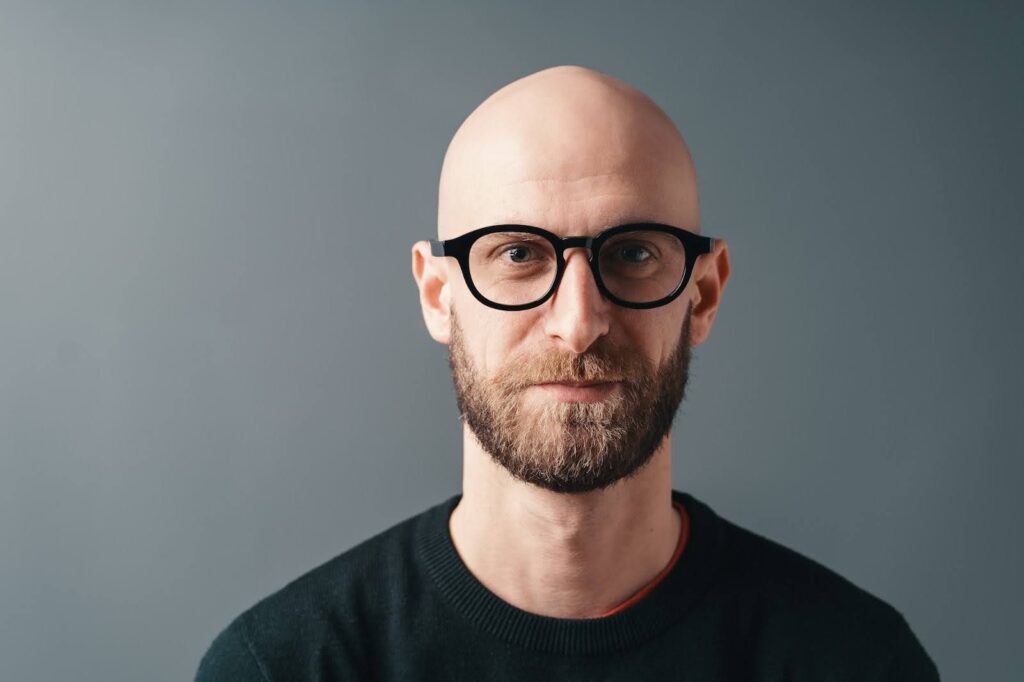So you’ve been frustrated by premature hair loss. You may have tried the “miracle” remedies that don’t work. And you’ve finally realized that hair transplant surgery is the best – and only – way to restore your hair to a look you can feel great about. At Nashville Hair Doctor we regularly evaluate all types of hair loss and prepare customized restoration plans for our clients using their photo uploads on our free quote request page.
In your research about hair transplants, you may have come across listings of various hair loss types such as shown below. They typically range from Class 1 to Class 7, where Class 1 is a person who hasn’t lost any significant amount of hair beyond what’s perfectly normal and who doesn’t need hair restoration, and Class 7 is a person with a completely bald crown and hair ringing the sides and back. Some websites will go into great detail describing each hair loss type and helping you determine the ideal number of grafts needed to restore your hair.



At the Nashville Hair Doctor, we are a little ambivalent about such a rigid hair loss classification system for several reasons.
What Are the Different Hair Loss Types?
A Quick Recap on Hair Restoration
To illustrate why, let’s do a quick recap on how medical hair restoration works: A hair transplant technician extracts donor hair from an area of the scalp that is resistant to hair loss, and transplants it follicle by follicle into the balding areas of the scalp. In most cases the culprit is male pattern baldness, meaning the donor hair has to come from the back and sides of the head to fill in the balding areas on top of the head. How much donor hair is available for transplantation depends on the state of balding you are in.
Most patients have enough donor hair to work with, since the hair in the donor region of the scalp is not typically affected by hair loss. However, depending on the progression of hair loss, you may need fewer or more grafts to fill in the balding area.


Don’t Fret About Your Hair Loss Type
A system that segments the population into very specific hair loss types suggests that there is one specific answer for every class, and that all you have to do is shop around for a transplant that can cure your type of hair loss. But hair restoration doesn’t work like Remedial Math 101. Hair restoration is much more art than science, and it requires a master technician with years of experience to take a look at your scalp and decide which approach is best. He or she will take into consideration a host of factors like the patient’s age, family history, type and texture of hair, and the amount and quality of the donor hair. All this will help him determine how many grafts are needed to restore your hairline and volume with the most natural look.
Once your technician gets started on the hair transplant surgery, he will make sure to extract the most viable donor hair follicles. When it comes time to implant them, it is important to do so at the correct angles so the results look exactly like natural hair big dollar casino.
What Nashville Hair Doctor Can Do
All of this attention is simply not possible by looking at a pictogram. It is essential for your hair doctor to assess you individually to some up with the best and most economical treatment plan. At the Nashville Hair Doctor, we pride ourselves in taking good care of our patients regardless of hair loss type. We believe that everyone deserves a chance to look good and feel great about themselves. No matter if you are only showing the beginnings of a receding hairline that might need a smaller number of grafts, or already have a growing “bald spot” in the back of your head, our Nashville Hair Doctor team is here to help. Our NeoGraft Master Techs have decades of experience and continue to learn new techniques to assure the best outcomes.


Am I a Good Hair Restoration Candidate?
It’s never too early to think about hair restoration. You may look at these pictograms and think that you fall into Class 1, meaning your hair loss is in the realm of what’s considered normal. But even a slightly receding hairline can be a harbinger of more severe hair loss a few years down the road. Why go through it when you could use hair restoration now, with a very limited number of grafts, to maintain your full healthy head of hair?
We’d also like to add that as with all plastic surgery, a successful hair transplant requires that you have realistic expectations. It doesn’t matter which stage of baldness you find yourself in – you can be happy with the outcome and gain new confidence even with a limited number of grafts. The decision comes down to how many grafts will be enough to satisfy your expectations. Wanting to reestablish a thinning look in an area where you were bald before is more realistic than going from bald crown to full head of hair.
A Picture Speaks a Thousand Words
Why settle for a pictogram when your actual hair tells a much better story? The best way to determine the number of hair grafts you need to achieve the hoped-for look is to easily upload pictures of your very own hair in less than 10 minutes. Our consultant will get back to you the next day to discuss options for a customized procedure. Visit our FREE ONLINE QUOTE REQUEST page to get started on your hair restoration journey.

